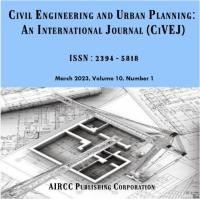,
GEOTECHNICAL CHARACTERIZATION ON THESOYO ROAD SECTION USING ELECTRICALRESISTIVITY AND SEISMIC MEASUREMENTS
Civil Engineering and Urban Planning: An International Journal (CiVEJ), 11 (1): 15 - 28 (2024)
Аннотация
The need for near-surface soils and rocks characterization at planned construction sites, using geophysical techniques, has grown rapidly during the last few decades to map the variations in the soil stiffness and the depth to bedrock. Although borehole data are important in geotechnical engineering, providing information on stability and strength of soils and rocks, it is limited to a few points. To take borehole data on the hole construction site becomes necessary increase the borehole density, which makes the project very expensive. Geophysical techniques have the advantage in collecting information of large volume of soils and rocks in its natural state. The Soyo Road was opened to traffic in 2017 but, due to the lack on soils and rocks physic-mechanical properties information, there is still to complete a section of about 700 meters in the mangrove zone. Geophysical techniques were applied with the main goal of providing technical information, essential for the completion of the targeted road section. Electrical resistivity data was recorded along a profile of 820m long, using forty-two electrodes20-meter spaced, under pole-dipole array. Seismic measurements were taken using twenty-four geophones, 5-meter spaced, 115-meter length spread. Five seismic spreads were connected, generating a seismic line of 575-meters long. Measured geophysical data were processed using EarthImager 2D, SeisImager/2D and SeisImager/SWpackages. Electrical resistivity section shows two zones, the first associated with unconsolidated and/or poorly consolidated soils, composed by clay, silt, sandy, carbonated rocks mixed with sloth and organic clay and, the second associated with rock, composed by clay, all them saturated with marine saltwater. Seismic refraction section shows an interface separating non-compacted soils and unconsolidated rocks to compacted soils. Multi-channel analysis of surface waves model shows an alternating sequence of horizontal horizons in the investigated first ≈25-meter depth, composed by non-compacted soils and/or unconsolidated rocks and compacted soils. Due to its shear velocity values the site is constituted by soft and stiff soils, composed by homogeneous organic matter and elements of mineral origin, responsible for the ruptures and landslides that occurred and for the sinking of the structures built on the site.
